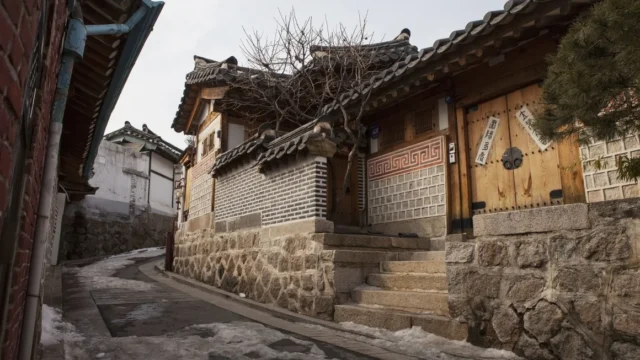Introduction
As over-tourism becomes a pressing issue globally, South Korea is stepping in to protect a historic district in downtown Seoul from an overwhelming influx of tourists. Bukchon Hanok Village, known for its traditional Korean houses, is now subject to stricter controls to mitigate the impact of mass tourism on local residents.
The Charm and Challenge of Bukchon Hanok Village
Bukchon Hanok Village, with its beautifully preserved traditional Korean houses called “hanok,” attracts thousands of visitors daily. This picturesque village is a top tourist destination in Seoul, drawing tourists who are captivated by its charm and cultural significance. However, the influx of tourists far exceeds the number of residents, leading to increasing complaints about noise, littering, and invasion of privacy.
Measures to Control Tourist Access
To address these concerns and reduce friction between tourists and locals, district officials will implement restrictions on tourist access starting as early as October. Bukchon will be designated South Korea’s first-ever “special management area” under the Tourism Promotion Act. New regulations will enforce strict curfews for non-residents between 5 p.m. and 10 a.m. Additionally, chartered buses carrying tourists will be restricted in several sections to minimize traffic and make Bukchon more pedestrian-friendly.
Zoning and Crowd Control
Three color-coded zones – red, orange, and yellow – will be established to help local authorities manage and monitor crowds in the most densely populated areas. Violators of these new regulations will face fines, ensuring compliance and alleviating the pressure on the village’s infrastructure. In response to public complaints, multilingual signs warning tourists about noise levels have been installed since 2018.
Historical Significance of Bukchon
Bukchon has a rich history, serving as residential quarters for high-ranking officials and nobility during the era of the Joseon kings, who ruled Korea from the 1300s until 1910. Today, the village is home to around 6,000 residents and various businesses, including inns, craft stores, and cafes. Despite its historical significance and cultural charm, the overwhelming number of tourists has made life challenging for locals.
Mixed Reactions from Locals
While some residents and business owners appreciate the government’s efforts, others remain skeptical about the effectiveness of the new measures. Lee Youn-hee, a cafe owner, noted that tourists typically leave after sunset, suggesting that the restrictions might not significantly impact the current situation. “In the winter, visitors are gone by 5 p.m., and during summer maybe by 6 p.m. because the days are longer,” Lee said. “This won’t make a big difference.”
The Global Problem of Over tourism
Seoul is not alone in grappling with the challenges of over-tourism. Cities worldwide are struggling to balance the economic benefits of tourism with the need to maintain a high quality of life for residents. In Barcelona, protesters have taken to spraying water on tourists to demonstrate against mass tourism. Venice introduced a trial fee to limit the number of day-trippers. Japan, too, faces severe over-tourism issues, particularly in iconic locations like Mount Fuji and Kyoto’s Gion district.
Bukchon’s Tourism Statistics
According to government data, approximately 6.6 million domestic and international tourists visited Bukchon in 2023. This influx has exacerbated issues for residents, prompting the need for stricter controls and measures to preserve the village’s charm and livability.
Tourists’ Perspectives
Despite the restrictions, many tourists understand the need for these measures and emphasize the importance of respecting local residents. Sindere Schoultz, a tourist from Sweden, expressed the sentiment well: “We want to come here and have a good time, but we don’t want to step on somebody’s toes and be disrespectful.” Another tourist, Emma Hägg, echoed this sentiment, stating, “I don’t mind it. I completely understand why and it’s good that they still want us.”
Conclusion
The measures introduced to control tourism in Bukchon Hanok Village reflect a growing need to manage over-tourism while preserving the cultural and historical integrity of popular destinations. By enforcing curfews, restricting access, and implementing fines, the government aims to protect both the residents’ quality of life and the village’s unique charm. As over-tourism continues to pose challenges globally, Bukchon’s approach offers valuable lessons in sustainable tourism management.











